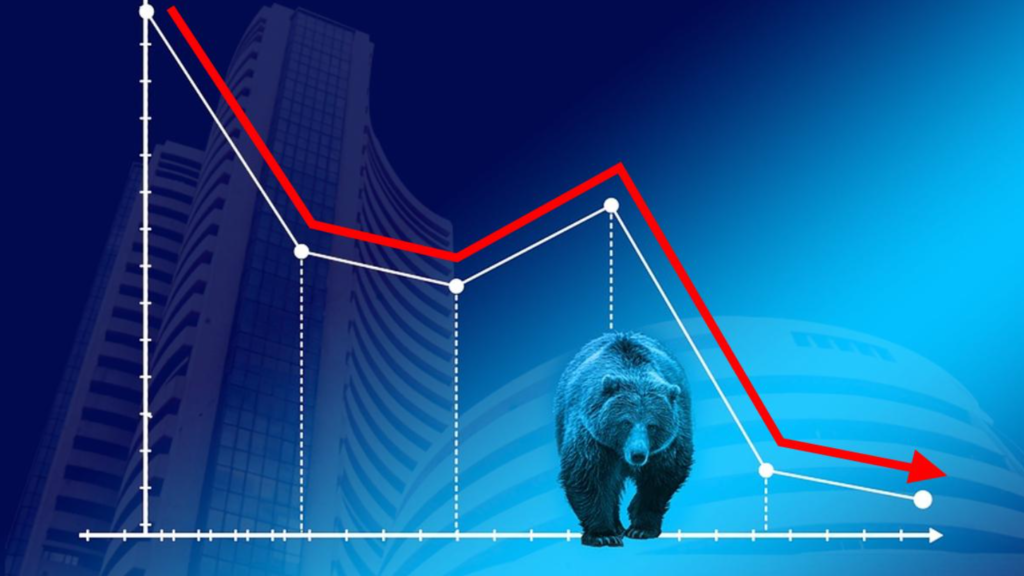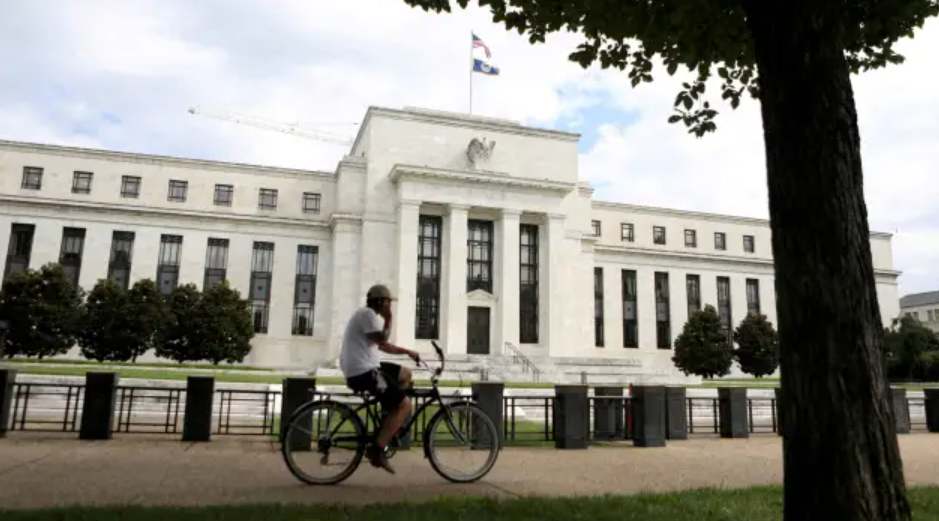The BSE Sensex fell more than 825 points, or 1.26 percent, to close at 64,571.88, while the NSE Nifty50 fell over 261 points, or 1.34 percent, to close at 19,281.75 for the day.
- SUMMARY
- On Monday, the Sensex and Nifty both fell more than 1%.
- The global market’s weakness weighed on Dalal Street.
- Investors lose Rs 12.79 billion; the market capitalization of BSE-listed companies falls
Domestic equity markets fell on Monday after beginning marginally higher. Higher bond yields and the risk of a larger conflict in the Middle East depressed trading confidence around the world at the start of the week, as traders anticipated earnings from several mega-cap companies and critical data, pushing global shares down to seven-month lows.

The BSE Sensex fell more than 825 points, or 1.26 percent, to close at 64,571.88, while the NSE Nifty50 down almost 261 points, or 1.34 percent, to close at 19,281.75. Broader markets were hit hard, with the BSE midcap index falling roughly 3% and the BSE smallcap index falling more than 4%. The fear measure India VIX, on the other hand, increased modestly to 10.91 levels.
“Despite healthy private bank performance and marginal reductions in oil prices, investor confidence remained pessimistic, and widespread consolidation persisted in domestic markets.” According to Vinod Nair, Head of Research at Geojit Financial Services, the global markets reflected the same trend, as the instability in West Asia has the potential to escalate further.

“Amid concerns about growth slowing due to higher interest rates and higher energy prices, risk aversion was seen in the Indian mid- and small-cap space, banks, metals, and energy stocks.” While a time of consolidation appears likely in the immediate term, the depth of this phase will be determined by global circumstances,” he said.Investors lost Rs 12.79 lakh crore in notional wealth as the overall market capitalization of all BSE-listed companies fell to Rs 311.33 lakh crore at the close on Monday from Rs 324.12 crore on Friday, October 20. Here are the primary elements that influenced market sentiment.
Also Read: Chevron Will Pay $53 Billion For Hess Corp In The Second Oil Mega-Merger In As Many Weeks
Increase in US bond yields
On Monday, the benchmark 10-year Treasury yield surpassed 5% for the first time since 2007, as a roaring US economy encouraged investors to expect interest rates to remain high for a lengthy term. The 10-year Treasury yield has reached 5.012 percent, the latest indication of the magnitude of the global bond sell-off, which is being driven by rising government debt and increased supply of bonds globally.

Geopolitical concerns
The war in the Middle East was also on traders’ thoughts that day. The prospect that Israel’s fight with the Islamist group Hamas would escalate into a wider regional confrontation has markets on edge, as Israeli air raids hit Gaza early in the day. Furthermore, the US deployed more military assets to the region. Clashes on Israel’s border with Lebanon have escalated.

Benchmark indexes took a beating in the final hour of trading as simmering geopolitical tensions in the Middle East created a wave of selling pressure and pushed investors to unload equity, according to Shrikant Chouhan, Head of Equity Research (Retail), Kotak Securities. “The Israel-Hamas conflict has increased further and led to weak sentiment in global equities.”
Economic Indicators
This week’s highlights for investors include the European Central Bank meeting, the release of US GDP data, and the Federal Reserve’s preferred inflation indicator. Federal Reserve Chair Jerome Powell’s remarks about the health of the US economy and hot labor markets warranting stricter financial conditions dampened attitudes.
Consistent FPI outflows
Foreign portfolio investors continue to withdraw funds from India’s equities markets. According to NSDL statistics, after selling equities worth Rs 14,768 crore in September 2023, offshore investors withdrew Rs 10,345 crore from local shares.
Dalal Street
click here to learn more about Dalal Street.
Also Read: Biden Designates 32 States And Puerto Rico As Technology Hubs To Aid Industry And Create Jobs
image source: google




































